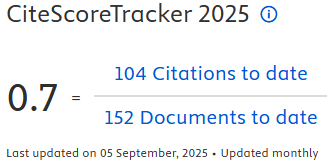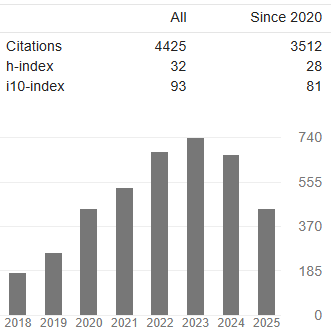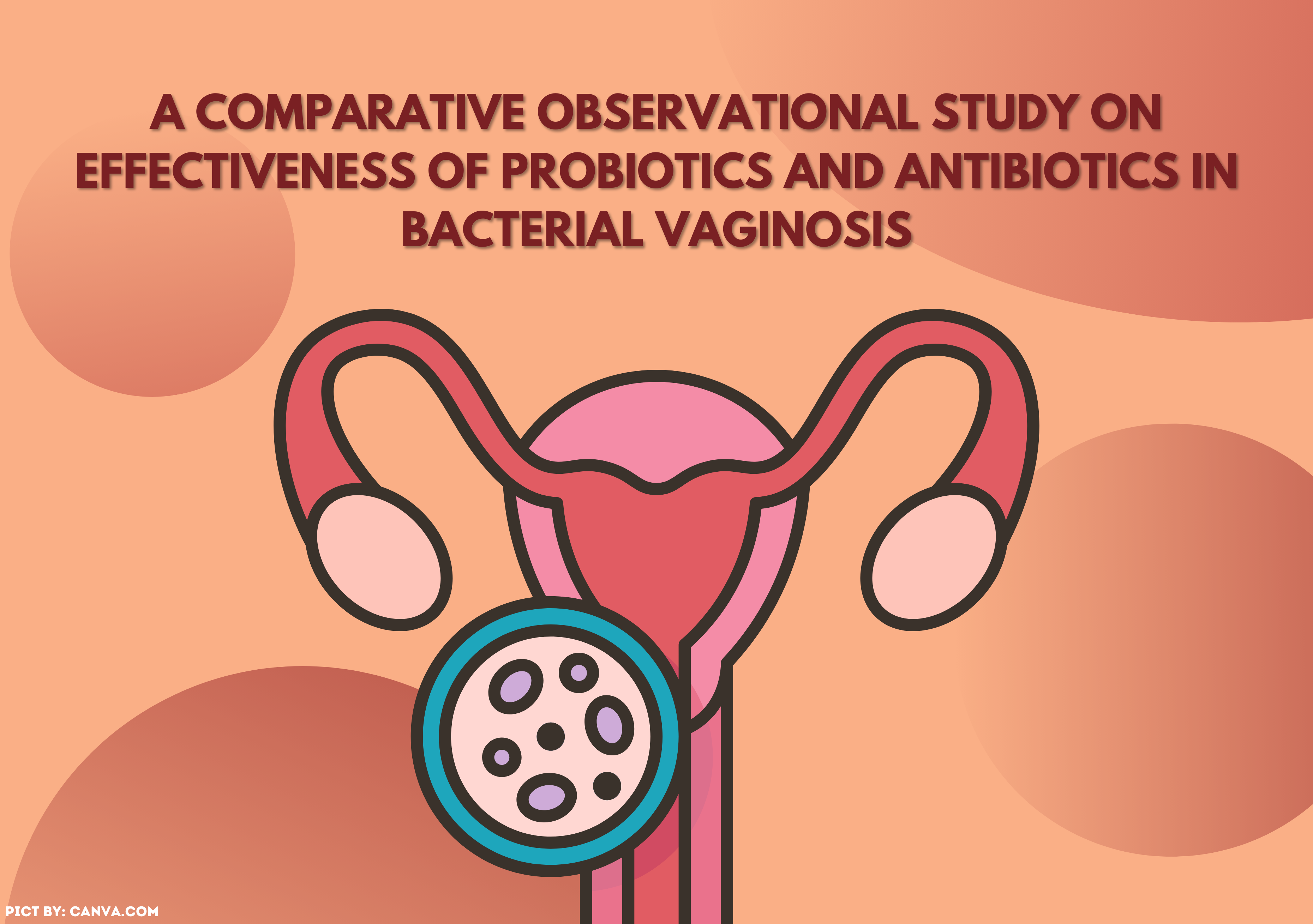YOGA ADOPTION INTENTIONS AMONGST UNIVERSITY STUDENTS: VARIABLES AND LINKAGES

Introduction: Compared to earlier times, university students are showing low physical activity levels. Compared to university students in the USA, students at Indian higher education institutions are 30% less physically active. The habits and beliefs formed at this stage of life are expected to have a long-term influence. Yoga is considered an alternative therapy effective in improving physical and mental health. Assessing the factors influencing university students' yoga adoption intentions is essential. Aims: To evaluate the selected university students' physical activity level and the mediating role of cues to action. Methods: The research design is cross-sectional and causal. The response of 120 university students was collected. The analysis is based on Structural Equation Modelling (SEM), and the software used includes SmartPLS and Microsoft Excel. Results – The study confirms the full mediation role of cue to action on the relationship between positive attitude for yoga and behavioral intentions to adopt yoga (effect = 0.179, t = 3.098, p < 0.002). Similarly, cue to action partially mediates the relationship between friend's support for yoga and behavioral intentions to adopt yoga (effect = 0.102, t = 2.34, p < 0.019). Conclusion: The university administrators should increase the cue to action for adopting health promotion behavior, including yoga at all levels, i.e., individual, relationships, community, social and policy making. To begin with, interventions such as developing educational videos, mandatory health promotion courses, and a buddy system can be started.
Abrantes, L. C. S., de Souza de Morais, N., Gonçalves, V. S. S., Ribeiro, S. A. V., de Oliveira Sediyama, C. M. N., do Carmo Castro Franceschini, S., dos Santos Amorim, P. R., & Priore, S. E. (2022). Physical activity and quality of life among college students without comorbidities for cardiometabolic diseases: systematic review and meta-analysis. Quality of Life Research, 31(7), 1933–1962. https://doi.org/10.1007/s11136-021-03035-5
Adamson, K. A., & Prion, S. (2013). Reliability: Measuring Internal Consistency Using Cronbach's α. Clinical Simulation in Nursing, 9(5), e179–e180. https://doi.org/10.1016/j.ecns.2012.12.001
Ajzen, I., Madden, T. J., & Ellen, S. P. (1992). A Comparison of the Theory of Planned Behavior and the Theory of Reasoned Action. In Personality and Social Psychology Bulletin (Vol. 18, Issue 1, pp. 3–9). https://doi.org/10.1177/0146167292181001
Ali, M. A., Kamraju, M., Devi, S., & Manisha, P. (2020). A study on influence of yoga on student's life. Journal Impact Factor, July.
Anjana, R. M., Pradeepa, R., Das, A. K., Deepa, M., Bhansali, A., Joshi, S. R., Joshi, P. P., Dhandhania, V. K., Rao, P. V., Sudha, V., Subashini, R., Unnikrishnan, R., Madhu, S. V., Kaur, T., Mohan, V., Shukla, D. K., & ICMR– INDIAB Collaborative Study Group (2014). Physical activity and inactivity patterns in India - results from the ICMR-INDIAB study (Phase-1) [ICMR-INDIAB-5]. International Journal of Behavioral Nutrition and Physical Activity, 11(1), 1–11. https://doi.org/10.1186/1479-5868-11-26
Blair, S. N. (2009). Physical inactivity: The biggest public health problem of the 21st century. British Journal of Sports Medicine, 43(1), 1–2. https://doi.org/10.1016/S1440-2440(07)70066-X
Chang, H. P., Ma, C. C., & Chen, H. S. (2020). The impacts of young consumers' health values on functional beverages purchase intentions. International Journal of Environmental Research and Public Health, 17(10). https://doi.org/10.3390/ijerph17103479
Cholewa, S., & Irwin, J. D. (2008). Project IMPACT: Brief report on a pilot programme promoting physical activity among university students. Journal of Health Psychology, 13(8), 1207–1212. https://doi.org/10.1177/1359105308095979
Chou, P. H. B., & Wister, A. V. (2005). From Cues to Action: Information Seeking and Exercise Self-Care among Older Adults Managing Chronic Illness. Canadian Journal on Aging / La Revue Canadienne Du Vieillissement, 24(4), 395–408. https://doi.org/10.1353/cja.2006.0005
Dedeli, O., & Fadiloglu, C. (2011). Development and evaluation of the health belief model scale in obesity. TAF Preventive Medicine Bulletin, 10(5), 533–542. https://doi.org/10.5455/pmb.20110118022318
DeMello, M. M., Pinto, B. M., Mitchell, S., Dunsiger, S. I., & Stein, K. (2018). Peer support for physical activity adoption among breast cancer survivors: Do the helped resemble the helpers? European Journal of Cancer Care, 27(3), 1–8. https://doi.org/10.1111/ecc.12849
Demming, C. L., Jahn, S., & Boztug, Y. (2017). Conducting Mediation Analysis in Marketing Research. Marketing ZFP, 39(3), 76–98. https://doi.org/10.15358/0344-1369-2017-3-76
Erdoğan Yüce, G., & Muz, G. (2020). Effect of yoga-based physical activity on perceived stress, anxiety, and quality of life in young adults. Perspectives in Psychiatric Care, 56(3), 697–704. https://doi.org/10.1111/ppc.12484
Essiet, I. A., Baharom, A., Shahar, H. K., & Uzochukwu, B. (2017). Application of the Socio-Ecological model to predict physical activity behaviour among nigerian university students. Pan African Medical Journal, 26(September 2018). https://doi.org/10.11604/pamj.2017.26.110.10409
Faizi, N., & Kazmi, S. (2017). Universal health coverage "‘ There is more to it than meets the eye. Journal of Family Medicine and Primary Care, 6(1), 169–170. https://doi.org/10.4103/jfmpc.jfmpc_13_17
Gard, T., Brach, N., Hölzel, B. K., Noggle, J. J., Conboy, L. A., & Lazar, S. W. (2012). Effects of a yoga-based intervention for young adults on quality of life and perceived stress: The potential mediating roles of mindfulness and self-compassion. Journal of Positive Psychology, 7(3), 165–175. https://doi.org/10.1080/17439760.2012.667144
Gard, T., Noggle, J. J., Park, C. L., Vago, D. R., & Wilson, A. (2014). Potential self-regulatory mechanisms of yoga for psychological health. Frontiers in Human Neuroscience, 8(SEP), 1–20. https://doi.org/10.3389/fnhum.2014.00770
Genc, F., & Yigitbas, C. (2021). Obesity among University Students and their Awareness of it with Regards to Some Aspects and the Education they Receive. International Journal of Caring Sciences, 14(1), 1–558.
Gore, M. N., Menon, K. C., Safai, A. A., Shukla, S., & Yeravdekar, R. (2021). Determinants of health-promoting lifestyles amongst Indian University students. International Journal of Health Promotion and Education, 59(3), 135–144. https://doi.org/10.1080/14635240.2020.1726202
Hagins, M., Moore, W., & Rundle, A. (2007). Does practicing hatha yoga satisfy recommendations for intensity of physical activity which improves and maintains health and cardiovascular fitness? BMC Complementary and Alternative Medicine, 7, 1–9. https://doi.org/10.1186/1472-6882-7-40
Hair Jr, J. F., Hult, G. T. M., Ringle, C. M., Sarstedt, M., Danks, N. P., & Ray, S. (2021). Partial least squares structural equation modeling (PLS-SEM) using R. Springer. https://doi.org/10.1007/978-3-030-80519-7
Hanson, J., & Benedict, J.A. (2002). Use of the Health Belief Model to Examine Older Adults . Journal of Nutrition Education and Behavior, 34(s), 25–30. https://doi.org/10.1016/S1499-4046(06)60308-4
Henshaw, E. J., & Freedman-Doan, C. R. (2009). Conceptualizing mental health care utilization using the health belief model. Clinical Psychology: Science and Practice, 16(4), 420–439. https://doi.org/10.1111/j.1468-2850.2009.01181.x
Jana, A., & Chattopadhyay, A. (2022). Prevalence and potential determinants of chronic disease among elderly in India: Rural-urban perspectives. PLoS ONE, 17(3 March), 1–16. https://doi.org/10.1371/journal.pone.0264937
Jeitler, M., Högl, M., Peters, A., Schumann, D., Murthy, V., Bringmann, H., Seifert, G., Michalsen, A., Stöckigt, B., & Kessler, C. S. (2020). Qualitative study of yoga for Young adults in school sports. Complementary Therapies in Medicine, 55(September), 1–7.
https://doi.org/10.1016/j.ctim.2020.102584
Kaur, H., Singh, T., Arya, Y. K., & Mittal, S. (2020). Physical Fitness and Exercise During the COVID-19 Pandemic: A Qualitative Enquiry. Frontiers in Psychology, 11(October), 1–10. https://doi.org/10.3389/fpsyg.2020.590172
Khera, R., & Sharma, R. (2012). Physical inactivity among college students is associated with living in hostels: A study from Delhi, India. Global Journal of Medicine and Public Health, 1(5), 82–85.
Kilanowski, J. F. (2017). Breadth of the Socio-Ecological Model. Journal of Agromedicine, 22(4), 295–297. https://doi.org/10.1080/1059924X.2017.1358971
Leininger, L. J., Adams, K. J., & DeBeliso, M. (2015). Differences in health promotion program participation, barriers and physical activity among faculty, staff and administration at a university worksite. International Journal of Workplace Health Management, 8(4), 246–255. https://doi.org/10.1108/IJWHM-10-2014-0045
McAuley, E., Courneya, K. S., Rudolph, D. L., & Lox, C. L. (1994). Enhancing Exercise Adherence in Middle-Aged Males and Females. In Preventive Medicine (Vol. 23, (4), pp. 498–506). https://doi.org/10.1006/pmed.1994.1068
Meyer, C., Hickson, L., Lovelock, K., Lampert, M., & Khan, A. (2014). An investigation of factors that influence help-seeking for hearing impairment in older adults. International Journal of Audiology, 53(S1). https://doi.org/10.3109/14992027.2013.839888
Neumark-Sztainer, D., Watts, A. W., & Rydell, S. (2018). Yoga and body image: How do young adults practicing yoga describe its impact on their body image? Body Image, 27, 156–168. https://doi.org/10.1016/j.bodyim.2018.09.001
Noradechanunt, C., Worsley, A., & Groeller, H. (2017). Thai Yoga improves physical function and well-being in older adults: A randomised controlled trial. Journal of Science and Medicine in Sport, 20(5), 494–501. https://doi.org/10.1016/j.jsams.2016.10.007
Norman, R. S., Blyholder, L., & Sanfilippo, J. (2020). Life Among Collegiate Students. 33(5), 675–682. https://doi.org/10.1177/0890117118817715.Sport
Premlal, K. S., Arumugam, B., & Nagalingam, S. (2016). Prevalence of Overweight and Obesity Among College Going Students at Kancheepuram Town, Tamil Nadu. International Journal of Preventive and Public Health Sciences, 1(6), 15–19. https://doi.org/10.17354/ijpphs/2016/11
Rhodes, D., Kramer, A., Whitlock, A., & Cox, C. (2016). Comparison of US and Indian College Students' Health Behaviors That Contribute to the Development of Chronic Diseasess. Health Educator, 48(1), 2–8.
Rumosa Gwaze, A., Batidzirai, J. M., Ngwane, Z., Mandeya, A., & Tyler, J. C. (. (2018). Health-Promotion Intervention Increases Self-Reported Physical Activity in Sub-Saharan African University Students: A Randomized Controlled Pilot Study. Behavioural Medicine, 72(23), 297–305. https://doi.org/10.1080/08964289.2017.1350134
Saghafi-Asl, M., Aliasgharzadeh, S., & Asghari-Jafarabadi, M. (2020). Factors influencing weight management behavior among college students: An application of the Health Belief Model. PLoS ONE, 15(2), 1–15. https://doi.org/10.1371/journal.pone.0228058
Sohl, S. J., Schnur, J. B., Daly, L., Suslov, K., & Montgomery, G. H. (2011). Development of the beliefs about yoga scale. International Journal of Yoga Therapy, 21, 85–91. https://doi.org/10.17761/ijyt.21.1.016p4306147737q5
Telles, S., Singh, N., Bhardwaj, A. K., Kumar, A., & Balkrishna, A. (2013). Effect of yoga or physical exercise on physical, cognitive and emotional measures in children: A randomized controlled trial. Child and Adolescent Psychiatry and Mental Health, 7(1), 1–16. https://doi.org/10.1186/1753-2000-7-37
Tucker, P., & Irwin, J. D. (2016). Feasibility of a Campus-Based "Buddy System” to Promote Physical Activity: Canadian Students' Perspectives. Journal of Physical Activity and Health, 3(3), 323–334. https://doi.org/10.1123/jpah.3.3.3233
Wang, X., Zhou, Q., Zhang, M., & Zhang, Q. (2021). Exercise in the Park or Gym? The Physiological and Mental Responses of Obese People Walking in Different Settings at Different Speeds: A Parallel Group Randomized Trial. Frontiers in Psychology, 12(October), 1–15. https://doi.org/10.3389/fpsyg.2021.728826
Wong, L. P., Alias, H., Tan, Y. R., & Tan, K. M. (2022). Older people and responses to COVID-19: A cross-sectional study of prevention practices and vaccination intention. International Journal of Older People Nursing, 17(3), 1–13. https://doi.org/10.1111/opn.12436
World Health Organization. (2020). WHO Newsroom-Factsheets-Details-Physical activity.
Wu, S., Feng, X., & Sun, X. (2020). Development and evaluation of the health belief model scale for exercise. International Journal of Nursing Sciences, 7, S23–S30. https://doi.org/10.1016/j.ijnss.2020.07.006
Copyright (c) 2024 The Indonesian Journal of Public Health

This work is licensed under a Creative Commons Attribution-NonCommercial-ShareAlike 4.0 International License.
- The authors agree to transfer the transfer copyright of the article to The Indonesian Journal of Public Health effective if and when the paper is accepted for publication.
- Authors and other parties are bound to the Creative Commons Attribution-NonCommercial-ShareAlike 4.0 International License for the published articles, legal formal aspect of journal publication accessibility refers to Creative Commons Attribution-NonCommercial-ShareAlike 4.0 International License (CC BY-NC-SA), implies that:
- Attribution ” You must give appropriate credit, provide a link to the license, and indicate if changes were made. You may do so in any reasonable manner, but not in any way that suggests the licensor endorses you or your use.
- NonCommercial ” You may not use the material for commercial purposes.
- ShareAlike ” If you remix, transform, or build upon the material, you must distribute your contributions under the same license as the original.































